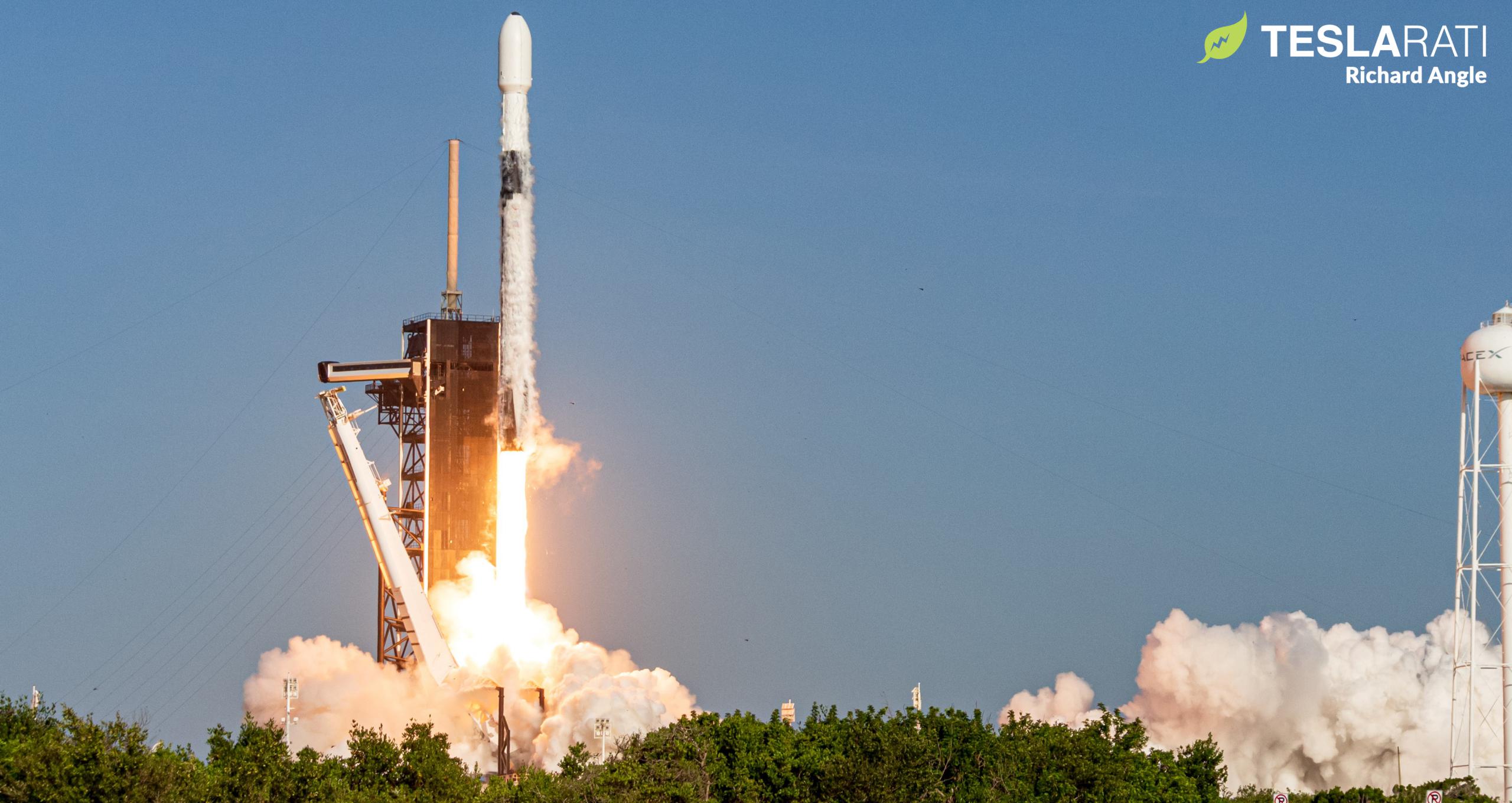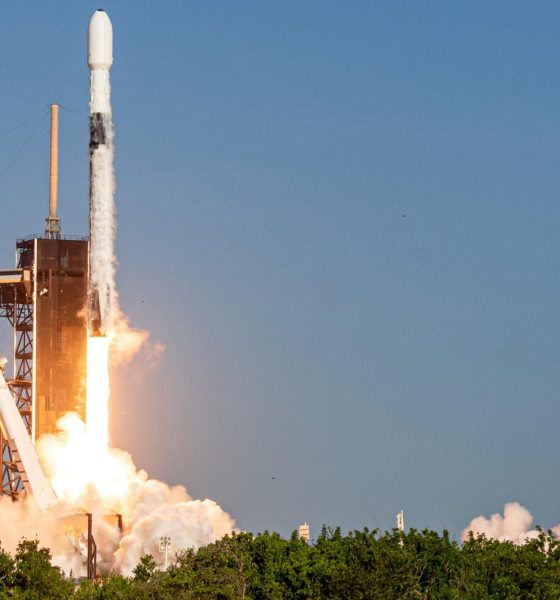

News
SpaceX’s next two Falcon 9 launch dates set in late September
SpaceX’s next Starlink launch has a firm date after stormy seas delayed its last attempt, placing the mission just two days before another crucial Falcon 9 launch and ~36 hours after ULA’s third scheduled NROL-44 launch attempt.
Launch photographer Ben Cooper and Spaceflight Now both confirm that SpaceX has rescheduled Starlink-12 to launch no earlier than (NET) 10:43 am EDT (UTC-4) on September 27th. Originally expected to launch on September 17th, a sequential pair of hurricanes forced SpaceX to delay the launch indefinitely until ocean conditions in the booster recovery zone improved.
While Starlink-12 floundered, the September 30th launch target for SpaceX’s third US military GPS III mission (SV04) has remained firmly in place for more than a month. Unexpectedly, satellite manufacturer Lockheed Martin revealed that SpaceX and the US military have actually moved the launch 24 hours forward. GPS III SV04 is now scheduled to lift off as early as 9:55 pm EDT (UTC-4) on September 29th, less than two days after Starlink.

For the third time, SpaceX is scheduled to fly a brand new Falcon 9 booster on a GPS III mission. According to US Launch Report’s Mike Wagner, Falcon 9 booster B1062 likely arrived in Cape Canaveral, Florida on September 11th, marking the official end of a month or two of acceptance testing – including a full static fire – at SpaceX’s McGregor, Texas facilities.


Following in the footsteps of Falcon 9 B1060’s flawless June 30th GPS III SV03 launch, booster B1062 will attempt to land after sending GPS III SV04 on its way to orbit. If successful, it will be the second orbital-class booster to land after an operational US military launch, slowly but surely paving the way towards the military’s first operational launch on a flight-proven rocket.

Meanwhile, as previously discussed on Teslarati, SpaceX’s Starlink-12 launch was scrubbed on September 17th by bad sea conditions at and around drone ship Just Read The Instructions (JRTI).
“In drone ship JRTI’s defense, the Eastern seaboard is still feeling the remnants of Hurricane Sally at the same time as Hurricane Teddy is just a day or two away. Just ~48 hours from now, Starlink-12’s Falcon 9 booster landing zone will be subject to 30-40 mph (50-70 km/h) winds and peak wave heights of 15 feet (~4.5m) in the shadow of Teddy. The seas in that region will likely remain untenable for booster landings until September 24th or 25th at the earliest without major changes in current forecasts.”
Teslarati.com — September 18th, 2020
Unable to best fast ocean currents in the remnants of Hurricane Sally, SpaceX called off the launch and landing attempt as forecasts predicted even worse conditions – lead by Hurricane Teddy – to be just ~36 hours away. Ultimately, that proved to be a smart decision and NOAA’s Atlantic Ocean forecasting was fairly accurate. Calm seas and winds are now expected to arrive by the evening of September 24th and last at least several days.
Starlink-12 will be SpaceX’s 12th operational v1.0 satellite launch and 13th mission overall, potentially leaving the company just two missions away from kicking off the first public beta tests of Starlink internet. As of today, two more Starlink missions are already scheduled to launch in October.
Check out Teslarati’s Marketplace! We offer Tesla accessories, including for the Tesla Cybertruck and Tesla Model 3.

Elon Musk
Elon Musk’s xAI closes upsized $20B Series E funding round
xAI announced the investment round in a post on its official website.

xAI has closed an upsized $20 billion Series E funding round, exceeding the initial $15 billion target to fuel rapid infrastructure scaling and AI product development.
xAI announced the investment round in a post on its official website.
A $20 billion Series E round
As noted by the artificial intelligence startup in its post, the Series E funding round attracted a diverse group of investors, including Valor Equity Partners, Stepstone Group, Fidelity Management & Research Company, Qatar Investment Authority, MGX, and Baron Capital Group, among others.
Strategic partners NVIDIA and Cisco Investments also continued support for building the world’s largest GPU clusters.
As xAI stated, “This financing will accelerate our world-leading infrastructure buildout, enable the rapid development and deployment of transformative AI products reaching billions of users, and fuel groundbreaking research advancing xAI’s core mission: Understanding the Universe.”
xAI’s core mission
Th Series E funding builds on xAI’s previous rounds, powering Grok advancements and massive compute expansions like the Memphis supercluster. The upsized demand reflects growing recognition of xAI’s potential in frontier AI.
xAI also highlighted several of its breakthroughs in 2025, from the buildout of Colossus I and II, which ended with over 1 million H100 GPU equivalents, and the rollout of the Grok 4 Series, Grok Voice, and Grok Imagine, among others. The company also confirmed that work is already underway to train the flagship large language model’s next iteration, Grok 5.
“Looking ahead, Grok 5 is currently in training, and we are focused on launching innovative new consumer and enterprise products that harness the power of Grok, Colossus, and 𝕏 to transform how we live, work, and play,” xAI wrote.
Investor's Corner
Tesla gets price target bump, citing growing lead in self-driving

Tesla (NASDAQ: TSLA) stock received a price target update from Pierre Ferragu of Wall Street firm New Street Research, citing the company’s growing lead in self-driving and autonomy.
On Tuesday, Ferragu bumped his price target from $520 to $600, stating that the consensus from the Consumer Electronics Show in Las Vegas was that Tesla’s lead in autonomy has been sustained, is growing, and sits at a multiple-year lead over its competitors.
CES 2026 validates Tesla’s FSD strategy, but there’s a big lag for rivals: analyst
“The signal from Vegas is loud and clear,” the analyst writes. “The industry isn’t catching up to Tesla; it is actively validating Tesla’s strategy…just with a 12-year lag.”
The note shows that the company’s prowess in vehicle autonomy is being solidified by lagging competitors that claim to have the best method. The only problem is that Tesla’s Vision-based approach, which it adopted back in 2022 with the Model 3 and Model Y initially, has been proven to be more effective than competitors’ approach, which utilizes other technology, such as LiDAR and sensors.
Currently, Tesla shares are sitting at around $433, as the company’s stock price closed at $432.96 on Tuesday afternoon.
Ferragu’s consensus on Tesla shares echoes that of other Wall Street analysts who are bullish on the company’s stock and position within the AI, autonomy, and robotics sector.
Dan Ives of Wedbush wrote in a note in mid-December that he anticipates Tesla having a massive 2026, and could reach a $3 trillion valuation this year, especially with the “AI chapter” taking hold of the narrative at the company.
Ives also said that the big step in the right direction for Tesla will be initiating production of the Cybercab, as well as expanding on the Robotaxi program through the next 12 months:
“…as full-scale volume production begins with the autonomous and robotics roadmap…The company has started to test the all-important Cybercab in Austin over the past few weeks, which is an incremental step towards launching in 2026 with important volume production of Cybercabs starting in April/May, which remains the golden goose in unlocking TSLA’s AI valuation.”
Tesla analyst breaks down delivery report: ‘A step in the right direction’
Tesla has transitioned from an automaker to a full-fledged AI company, and its Robotaxi and Cybercab programs, fueled by the Full Self-Driving suite, are leading the charge moving forward. In 2026, there are major goals the company has outlined. The first is removing Safety Drivers from vehicles in Austin, Texas, one of the areas where it operates a ride-hailing service within the U.S.
Ultimately, Tesla will aim to launch a Level 5 autonomy suite to the public in the coming years.
Elon Musk
Elon Musk’s Biggest Revelations on AI, Robots, and the Future of Work from the Moonshots Podcast

Elon Musk’s appearance on the Moonshots with Peter Diamandis podcast was packed with bold predictions, candid admissions, and surprising tech insights. The nearly three-hour conversation covered everything from artificial intelligence to humanoid robots, geopolitics, and the future of work. Here are the top 10 most intriguing takeaways:
-
Aggressive AGI Timeline Predictions
Musk offered a detailed view on when artificial general intelligence (AGI) could emerge, suggesting it may arrive sooner than many expect, emphasizing both transformative potential and risks.
-
U.S. vs. China in the AI Race
He discussed the strategic competition between the United States and China over AI development, noting that geopolitical dynamics will shape how and who leads in the next decades.
-
Future of Job Markets
Musk touched on how AI and automation could reshape employment, predicting massive boosts in productivity alongside potential disruptions in traditional work structures.
-
Clean Energy Transition
A recurring theme was the role of clean energy in future economies, with Musk reiterating the importance of scaling sustainable power generation and storage.
-
Humanoid Robots Are Coming
On the podcast, Musk elaborated on Tesla’s work on humanoid robots, hinting at timelines and applications that go beyond factories to general-purpose assistance.
-
Tesla Roadster “Last Human-Driven Car”
Outside the core discussion topics, Musk teased features of the upcoming Tesla Roadster — calling it “the best of the last of the human-driven cars” and suggesting safety won’t be its main selling point.
-
The Role of AI in Clean Energy and Robotics
Linking AI to both energy optimization and robotics, Musk explained how smarter systems could accelerate decarbonization and task automation across industries.
-
U.S. Innovation Leadership
Musk argued that maintaining American leadership in key tech sectors like AI, space, and robotics should be a national priority, with thoughtful policy and investment.
-
Job Creation vs. Job Elimination
While acknowledging automation’s disruptive effects, he also outlined scenarios where new industries and opportunities could emerge, particularly in AI, space, and advanced manufacturing.
-
Long-Term Vision for Humanity
Throughout the conversation, Musk revisited his long-term philosophical views — including a belief in humanity’s responsibility to become a multi-planetary and technologically empowered species.
Whether you agree with Musk’s optimism or not, the podcast offers a window into the thinking of one of the most influential figures in tech today, in and why his visions continue to spark debate and inspiration.








